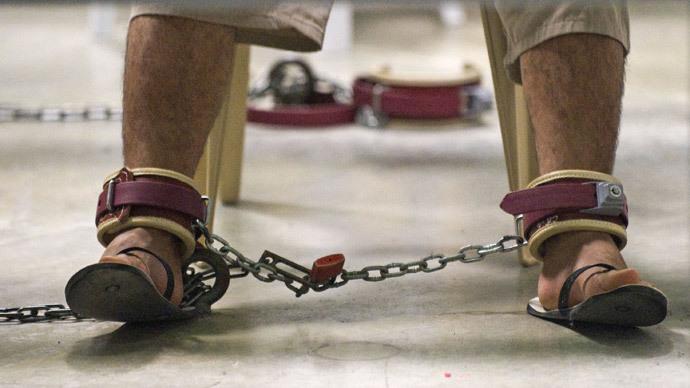CIA paid 2 torture experts $81mn for their 'unique expertise'

The so-called “Torture Report” released this week contains startling facts about the ways in which the CIA treated detainees. Also included, though, are details about the agency’s pricey contracts with those who designed the program described therein.
On Tuesday, the Senate Intelligence Committee finally published its long awaited executive summary concerning the apparent “enhanced interrogation techniques” carried out by CIA agents against suspected Al-Qaeda militants after the September 11 terrorist attacks. And while the report is indeed brimming with grim facts about waterboarding, sleep deprivation and other tactics used by the agency with little affect or oversight, its authors also included a substantial amount of information about the two federal contractors paid millions of dollars by the United States for designing the program of torture that was used for years against individuals held captive in covert overseas prisons.
According to the Senate panel’s long-awaited report, two contractors in particular – codenamed 'Swigert' and 'Dunbar' – played a pivotal role in advising the CIA as the agency sought tactics to interrogate suspected terrorists in the wake of 9/11. Reports published as far back as almost a decade ago identify those men as James Elmer Mitchell and Bruce Jessen – two psychologists who made bank by designing the torture program and to this day remain on Uncle Sam’s payroll.
In all, the Senate report suggests that the two contractors who created the torture program were paid more than $80 million in taxpayer money for their work with the CIA. The government has agreed to cover upwards of $5 million in additional indemnity costs for the two men if they incur legal costs for their role as interrogation program architects through 2021, and the executive summary released on Tuesday after nearly four years of work suggests the pair has already received $1.1 million due to legal fees largely involving the creation of the Senate Committee’s report.
Those men, the Senate Intelligence Committee said this week, were the “sole source contract to provide operational psychologists, debriefers and security personnel at CIA detention sites.”
In 2002, the CIA sent 'Swigert' to an unnamed country, according to the report, where he would initially “consult on the psychological aspects” of the planned interrogation of Abu Zubaydah – a Palestinian man captured that March in Pakistan as an enemy combatant.
Within a month of Zubaydah being captured, CIA headquarters had decided that the detainee would be interrogated by what the Senate report described as “the most coercive option” available to the government: a regiment designed by Swigert but opposed by the FBI.
The tactics proposed by Swigert, according to the report, included cramped confinement, wall standing, stress positions, sleep deprivation, waterboarding, forcing detainees to wear diapers, and what the Senate called “mock burial.” Swigert had come up with those suggestions and others along with 'Dunbar,' and told the CIA that the men should be contracted together to aid with interrogations.
Both Swigert and Dunbar lacked previous involvement in any real-world interrogations, the Senate Committee found, and had proposed a policy of torture developed decades earlier by the US based on resisting torture tactics that the North Vietnamese might have used against American troops. Regardless of their inexperience and their insistence on using crude techniques intended to sometimes bring detainees close to death, however, the government gave both contractors millions of dollars over the course of several years to oversee the program they orchestrated under then-President George W. Bush.
“Neither psychologist had experience as an interrogator, nor did either have specialized knowledge of Al-Qaeda, a background in terrorism or any relevant regional, cultural or linguistic expertise,” the Senate report reads.
Nevertheless, the contractors "implicitly proposed continued use of the technique – at a daily compensation reported to be $1800/day, or four times that of interrogators who could not use the technique,” the Senate found.
As recently as June 2013, the CIA stood by their decision to contract the two men, telling the Intelligence Committee that Swigert and Dunbar’s “academic research” and “research papers” made them credible architects of the interrogation program. In response, the SIC wrote that the CIA failed to “describe any experience related to actual interrogations or counterterrorism, or any relevant cultural, geographic or linguistic expertise” exhibited by either man.
“We believe their expertise was so unique that we would have been derelict had we not sought them out when it became clear that CIA would be heading into the uncharted territory of the program,” the CIA told Senate staffers.
In a rare interview with ABC News this week, Mitchell condemned the Senate Committee’s findings.
"The men and women of the CIA put their lives on the line, put their personal lives on hold, and sacrificed for this country. And now at last, before they leave, dump this steaming load of crap out?" he said. "It's like somebody backed up to your driveway and dumped a steaming pile of horse crap.”













